American Civil War Uniforms
3:14 AM
Diposkan oleh Peace Keeper
The Uniforms of Confederate States during the civil war
The Uniforms of the Confederate States were the uniforms used by the Confederate Army and Navy during the American Civil War, from 1861 to 1865. The uniform varied greatly due to a variety of reasons, such as location, limitations on the supply of cloth and other materials, and the cost of materials during the war.
Confederate forces were often poorly supplied with uniforms, especially late in the conflict. Servicemen sometimes wore combinations of uniform pieces, also wearing captured Union uniforms, and items of personal clothing. They sometimes went without shoes altogether, and broad felt or straw hats were worn as often as kepis or naval caps. There are some controversies about some of the exact details of a few of the uniforms, since some of the records were lost or destroyed after the Civil War ended.
The uniform of Confederate's General
Infantry

Navy

Cavalry

Artillery

The Uniforms of Union during the civil war
The Uniform of the Union Army was widely varied and, due to limitations on supply of wool and other materials, based on availability and cost of materials during the United States Civil War. However it shows heavy French influence.
General

Union Navy Uniform

Union Cavalry Uniform

Union Artillery Uniform

American Civil War Facts
2:56 AM
Diposkan oleh Peace Keeper
- The United States populations in 1860 is 31,443,321. Approximately 23,000,000 were in the 22 Northern states and 9,000,000 in the 11 Southern states. Of the latter total, 3,500,000 were slaves.
- The Northern armies numbered 2,100,000 soldiers.
- The total dead on both sides was about 500,000.
- Of the 364,000 on the Union side who lost their lives, a third were killed or died of wounds and two-thirds died of disease.
- The chance of surviving a wound in Civil War days was 7 to 1; in the Korean War, 50 to 1
- 15% of the wounded died in the Civil War
- There were 6,000,000 cases of disease in the Federal armies.
- The diseases most prevalent were dysentery, typhoid fever, malaria, pneumonia, arthritis, and the acute diseases of childhood, such as measles, mumps, and malnutrition.
- 80% of all wounds were produced was a single-shot, muzzle-loading rifle in the hands of foot soldiers.
- Most wounds were caused by an elongated bullet made of soft lead, about an inch long, pointed at one end and hollowed out at the base, and called a "minie" ball, having been invented by Capt.
- Fully armed, a soldier carried about seven pounds of ammunition. His cartridge box contained 40 rounds, and an additional 60 rounds might be conveyed in the pocket if an extensive battle was anticipated.
- The muzzle-loading rifle could be loaded at the rate of about three times a minute. Its maximum range was about 1000 yards.
- Most infantry rifles were equipped with bayonets, but very few men wounded by bayonet showed up at hospitals. The conclusion was that the bayonet was not a lethal weapon.
- Artillery was used extensively, but only about 10 percent of the wounded were the victims of artillery fire.
- Besides the rifle and cannon, weapons consisted of revolvers, swords, cutlasses, hand grenades, Greek fire and land mines.
- Many doctors who saw service in the Civil War had never been to medical school, but had served an apprenticeship in the office of an established practitioner.
- In the Peninsular campaign in the spring of 1862, as many as 5000 wounded were brought into a hospital where there were only one medical man and five hospital stewards to care for them.
- The first organized ambulance corps were used in the Peninsular campaign and at Antietam.
- In the battle of Gettysburg, 1100 ambulances were in use. The medical director of the Union army boasted that all the wounded were picked up from the field within 12 hours after the battle was over.
- 80% of all wounds during the Civil War were in the extremities
- The first U. S. Naval hospital ship, the Red Rover, was used on the inland waters during the Vicksburg campaign.
American Civil War Timeline
4:37 AM
Diposkan oleh Peace Keeper
| 1787 | Northwest Ordinance bans slavery in the Northwest Territory; makes Ohio River the boundary between free and slave territory between the Appalachian Mountains and the Mississippi River. Mason and Dixon line remains the dividing line in east. |
| 1790 | Slave population in Federal Census: 698,000 |
| 1798 | The Kentucky and Virginia Resolutions are secretly written by Thomas Jefferson and James Madison, and are passed by the two states. It claims that the states can negate federal laws; the theme reappears in the nullification debates after 1828. |
| 1801 | Gabriel Plot frightens whites in Virginia who believe there was a plot for a slave uprising |
| 1804 | New Jersey enacts gradual abolition of slavery; all northern states have now put slavery on the path to extinction |
| 1808 | Congress outlaws the international slave trade. It becomes illegal to import a slave into the United States from abroad, or to export one. However, thousands of slaves are smuggled into the southern US. |
| 1816 | American Colonization Society formed to send freed slaves to Liberia. About 12,000 are sent. Society led by James Monroe, Henry Clay and other prominent slave owners |
| 1820 | Slave population in Census: 1,538,000 |
| 1820 | Missouri Compromise admits Maine as a free state, and Missouri as slave state, but restricts any more slavery north of 36° 30' line. Abrogated by Kansas-Nebraska Act of 1854. |
| 1822 | Vesey Plot frightens whites in South Carolina, who believe there was a plot for a slave uprising |
| 1828 | Calhoun's South Carolina Exposition and Protest outlines nullification doctrine. Calhoun threatens secession over tariffs. Calhoun also objected to the use of taxes and tariffs collected in one state being used for internal improvements to another state. |
| 1829 | David Walker publishes Appeal to the Colored Citizens of the World calling on slaves to revolt. |
| 1830 | Daniel Webster delivers a memorable Reply to Hayne, denouncing the notion that Americans must choose between liberty and union. "Liberty and Union, now and forever, one and inseparable!" he cries. |
| 1831 |
|
| 1832 | President Andrew Jackson threatens force to end threats of secession in South Carolina caused by the Nullification Crisis. |
| 1833 |
|
| 1834 |
|
| 1836 | In response to petition campaigns, the U.S. House of Representatives adopts a gag rule, by which all antislavery petitions presented to the House would be immediately tabled, without discussion. John Quincy Adams leads an eight year battle against the gag rule, arguing that the Slave Power, as a political interest, threatens constitutional rights. |
| 1837 | Mob kills abolitionist and anti-Catholic editor Elijah P. Lovejoy in Alton, Illinois; |
| 1839 | Slaves revolt on the Amistad; after a highly publicized court case, the slaves are given their freedom and most return to Africa. |
| 1840 | Slave population in Census: 2,487,000 |
| 1844 | The Methodist Episcopal Church, South breaks away from Methodist Episcopal Church on issue of slavery. |
| 1845 | The Southern Baptist Convention breaks off from the Northern Baptists; does not formally endorse slavery. |
| 1845 | Frederick Douglass publishes his first autobiography. |
| 1845 | Texas Annexation denounced by anti-slavery forces as evil expansion of slave territory. Whigs defeat annexation treaty but annexation is accomplished with by a majority vote. |
| 1846 | James D.B. DeBow establishes DeBow's Review, the leading Southern magazine; warns against depending on the North economically. DeBow's Review emerges as the leading voice for secession. DeBow emphasizes the South's economic underdevelopment, relating it to the concentration of manufacturing, shipping, banking, and international trade in the North. |
| 1846 | Oregon Treaty ends Oregon boundary dispute, defines final western segment of Canada – United States border and ends war scare with Great Britain. Northern Democrats complain Polk Administration backed down on Fifty-four forty or fight and sacrificed Northern expansion. |
| 1846 | Mexican War starts when Polk Administration deploys Army to disputed Texas territory resulting in Mexican attack. Whigs denounce war; antislavery critics charge war is a pretext for gaining more slave territory. U.S. Army quickly captures New Mexico. Northern representatives pass Wilmot Proviso to ban slavery in territory to be captured, but South blocks it in Senate. Proposal to extend Missouri Compromise line and other compromises fail. |
| 1848 |
|
| 1849 | General Zachary Taylor elected President after keeping views on slavery in Southwest secret during campaign, then reveals plan to admit California and New Mexico as free states covering entire Southwest and excluding creation of territories subject to slavery controversy. Taylor warns South that rebellion will be met with force. |
| 1849 | California Gold Rush suddenly populates Northern California with Northern and immigrant settlers outnumbering Southerners; state constitutional convention unanimously rejects slavery. |
| 1850 | Texas, supported by South, demands land in New Mexico. Controversy over slavery on Southwest ended by five-point Compromise of 1850, proposed by Henry Clay and brokered by Stephen A. Douglas. Southern California becomes part of a free state, and eastern New Mexico and other northern Texas claims become not part of a slave state. South is compensated with Texas debt relief, stiffened Fugitive Slave Law, and popular sovereignty theoretically allowing slavery in New Mexico Territory and Utah Territory. Slavery is retained in District of Columbia but slave trade banned. Southern Unionists prevail this time as secessionists lose momentum, but South declares no further concessions to North will be tolerated. Fugitive Slave Law of 1850 turns out to offend Northerners; then Southerners angered by Northern resistance to enforcement. |
| 1851 | Southern Unionists in several states defeat secession measures; Mississippi's convention denies the existence of the right to secession. |
| 1852 |
|
| 1853 | |
| 1854 |
|
| 1855-1856 | Violence breaks out in "Bleeding Kansas" |
| 1856 | Preston Brooks canes Charles Sumner on floor of Senate; North takes the lesson that compromise is harder and violence is near surface. In presidential election Republican John C. Frémont crusades against slavery; the slogan is "Free speech, free press, free soil, free men, Frémont and victory!" Democrats counter-crusade, warning of civil war, and win. |
| 1857-1860 |
|
| 1857 |
|
| 1858 |
|
| 1859 |
|
| 1860 | Slave population in Census: 3,954,000 |
| 1860 |
|
| 1861 |
|
American Civil War Timeline 1862
| Date | Event | Casulities | Summary |
| February 6 (Fort Henry) February 16 (Fort Donelson) | Fighting on the Mississippi | 17,398 | After capturing Fort Henry along the Tennessee River the Union army with 15,000 men led by Ulysses S. Grant attacked Fort Donelson, a Confederate fort on the Cumberland River. At Fort Donelson Grant sent the message, "No terms except unconditional and immediate surrender can be accepted. I propose to move immediately upon your works." The North had six gunboats. The fighting lasted three days. Grant took 12,000 Confederate prisoners and 40 cannons from Fort Donelson. This cut off the Confederate supply line from the western territories. |
| March 9 | Ironclad Ships Battle | | For the first time in history two ironclad ships battled. The battle lasted for hours. Neither side won the battle. The Confederate ironclad was an old wooden ship called the Merrimac which had been rebuilt with iron all around the boat. The Merrimac had sunk several Union ships in the past months. The North decided to build an ironclad ship to fight it. The Northern ship was called the Monitor. |
| April 6 | Shiloh | 23,746 | After Grant had captured several forts in Tennessee his armies moved south toward Mississippi. The Confederate army met Grant at Shiloh, Tennessee. Grant had not expected the attack. At first he seemed to be losing. Then more Northern troops arrived and Grant defeated the Southerners. |
| April 16 | Confederate Army Calls for Men | | All men between the ages of 18 and 35 must serve in the army. |
| April 18 | New Orleans | 0 | Farragut attacked and captured New Orleans. |
| May 4 | Yorktown | McClellan's Union troops occupied Yorktown, Virginia and advanced on Richmond. | |
| May 30 | Corinth | Unknown | Northern army occupy Corinth, Mississippi |
| June 6 | Memphis | 181 | Memphis fell to the Union armies |
| June | Seven Days' Battle | In a series of battles the Southern army led by Generals Joseph E. Johnston and Robert E. Lee, the South managed to drive back the Union army. Lee breaks McClellan seige of Richmond. | |
| June 25 | Second Battle at Bull Run | 22,180 | The Union led by General John Pope was defeated at Bull Run Creek while trying to reach Richmond. The Union army retreat to Washington. |
| September 17 | Battle of Antietam | 23,100 | Lee took command telling the Confederate forces that he planned to carry the fight to the enemy. He crossed the Potomac River into Maryland, but was blocked from Washington, D. C. by Union troops in a bloody battle at Sharpsburg near Antietam Creek. Lee realized that his army was in a bad position to receive supplies and withdrew his troops over the Potomac to Virginia. |
| September 22 | Lincoln Frees all the Slaves | President issued a proclamation freeing all the slaves in the South. Lincoln's document called the Emancipation Proclamation because in emancipated the slaves. | |
| October 8 | Battle of Perryville | 7,407 | Buell's forces ended Bragg's invasion of Kentucky in the Battle of Perryville. |
| December 11 | Fredricksburg | 17,429 | Lincoln replaced General McClellan with Ambrose Burnside. Burnside's men were slaughtered at Fredricksburg. |
American Civil War Timeline 1863
| Date | Event | Casulities | Summary |
| January 2 | Battle of Stones River | 22,576 | Union troops under Rosecrans forced the Confederates to retreat after the Battle of Stones River. |
| April 30 | Chancellorsville | 20,000 | General Lee fought against General Joseph Hooker. Although outnumbered two to one, Lee won the battle. During the battle General Thomas J. "Stonewall" Jackson was killed. |
| May 18 | Vicksburg | 35,835 | In Vicksburg, Mississippi a strong fort overlooked the river. Grant surrounded the fort and began a siege. On July 4 Vicksburg surrendered. This gave the North control of the Mississippi River. |
| July 1 | Gettysburg | 51,000 | Robert E. Lee invaded Pennsylvania in June 1863. He was hoping to threaten Washington and Philadelphia, to breed Northern morale, and to gain recognition and independence for the Southern Confederacy. At Gettysburg, Pennsylvania, Lee's Army of Northern Virginia met the Army of the Potomac. It was under the command of General George G, Meade. This famous battle lasted three days. The Southerners were turned back and again retreated into Virginia. |
| July 8 | Port Hudson | 12,208 | Northern forces occupied Port Hudson, Louisana. |
| September 18 | Chickamauga | 34,624 | The Confederate Army led by General Braxton Bragg won against the Union army at Chickamauga Creek in Tennessee. General George Thomas commanded the Union army which was trapped in Chattanooga. |
| November 19 | Gettysburg Adress | | Lincoln delivered the Gettysburg Address. |
| November 23-25 | Chattanooga | 12,485 | Grant and Thomas led Union armies to victory in the Battle of Chattanooga. |
American Civil War Timeline 1864
| Date | Event | Casulities | Summary |
| March 9 | Grant appointed Commander-in-Chief | | President Lincoln appointed Grant became general in chief of the North. Grant then appinted General William T. Sherman to command the Western armies, while General George G. Meade remained the command of the armies of the East. |
| May | Sherman's march to the Sea | 12,140 in Atlanta | William T. Sherman left Tennessee with 100,000 troops. He marched to Atlanta, Georgia. He ten marched from Atlanta to the Atlantic Ocean. During this 300 mile march Sherman's soldiers burned and destroyed everything in a width of 60 miles. |
| May 5 - 6 | Battle of the Wilderness | 18,000 in Union troops | This was the first in a series of battles. The first Union attack was made in an area about 50 miles from Richmond. The Union gained little and lost much in casualties. |
| May 8 - 12 | Spotsylvania | 14,000 in Union troops | Grant ignored the losses in the Battle of the Wilderness and ordered Meade to move on toward Spotsylvania Court House. |
| May 31 | Cold Harbor | 15,500 | Grant kept moving toward Lee's army after Spotsylvania. They fought the Southern army at Cold Harbor in an advance upon Richmond. After many casualties the Union army called off the attack. |
| June 20 | Seige of Petersburg | 104,000 | This was the beginning of a nine month seige with Grant's men surrounding Lee's army. |
| August 5 | Mobile Bay | 1,822 | Farragut won the Battle of Mobile Bay.This closed the last Confederate Gulf port. |
| September 2 | Atlanta | 12,140 | Northern troops under Sherman captured Atlanta after a forty-day siege of the city. Sherman burned much of the city on November 15 before leaving to begin his march to the sea. |
| October 19 | Shenandoah Valley | | Sheridan led his troops on a rampage of destruction in the Shenandoah Valley. |
| November 8 | Election of Lincoln | | Lincoln was reelected President for a second term. |
| November 30 | Battle of Franklin | 8,587 | Schofield's Union forces inflicted heavy losses on Hood in the Battle of Franklin. |
| December 15-16 | Nashville | 6,602 | The Battle of Nashville smashed Hood's army. |
| December 21 | Savannah | | Sherman's troops occupied Savannah, Georgia. |
American Civil War Timeline 1865
| Date | Event | Casulities | Summary |
| February 6 | Lee becomes general | Lee became general in chief of the South. | |
| April 2 | Petersburg and Richmond | 7,750 | General Grant and General Meade's Army moved to the south of Richmond. During the winter of 1864-65 the Union army attacked many times, but could not break through. After nine months General Lee was forced to retreat toward Lynchburg giving up both Petersburg and Richmond. |
| April 9 | Appomattox Courthouse | 700 | General Lee surrendered to General Grant at Appomottox Courthouse, Virginia. |
| April 14 | Lincoln's assasination | On Good Firday, April 14 Lincoln was assassinated. He was attending a performance at Ford's Theatre in Washington, D. C. The assisin was and actor named John Wilkes Booth. After twelve days of running Booth was fatally shot. | |
| April 26 | Johnston surrenders | Johnston surrendered to Sherman. | |
| May 4 | Confederate's surrender | Confederate forces in Alabama and Mississippi surrendered. | |
| May 11 | Davis's capture | Jefferson Davis was captured near Georgia. | |
| May 26 | Confederate's surrender | The last Confederate troops surrendered. |
Corps Badges in the American Civil War
11:19 AM
Diposkan oleh Peace Keeper
Corps badges in the American Civil War were originally worn by soldiers of the Union Army on the top of their army forage cap (kepi), left side of the hat, or over their left breast. The idea is attributed to Maj. Gen. Philip Kearny, who ordered the men in his division to sew a two-inch square of red cloth on their hats to avoid confusion on the battlefield. This idea was adopted by Maj. Gen. Joseph Hooker after he assumed command of the Army of the Potomac, so any soldier could be identified at a distance.
Maj. Gen. Daniel Butterfield, Hooker's chief of staff, was assigned the task of designing a distinctive shape for each corps badge. Butterfield also designated that each division in the corps should have a variation of the corps badge in a different color. Division badges were colored as follows:
- Red — First division of corps
- White — Second division of corps
- Blue — Third division of corps
- Green — Fourth division of VI, IX, and XX Corps
- Yellow — Fourth division of XV Corps (reportably Orange was also used for a 5th Division Badge)
- Multicolor — Headquarters or artillery elements (certain corps)
The badges for enlisted men were cut from colored cloth, while officer's badges were privately made and of a higher quality. Metallic badges were often made by jewelers and were personalized for the user. The badges eventually became part of the Army regulations and a great source of regimental pride.
Corps Badges in the American Civil War
 Union Army, I Corps, 1st Division Badge, |  Union Army, II Corps, 3rd Division Badge |  Union Army, III Corps, 3rd Division Badge |  Union Army, IV Corps, 3rd Division Badge |
 Union Army, V Corps, 1st Division Badge |  Union Army, VI Corps, 1st Division Badge |  Union Army, VII Corps, 3rd Division Badge |  Union Army, VIII Corps, 3rd Division Badge |
 Union Army, IX Corps, 1st Division Badge |  Union Army, X Corps, 3rd Division Badge |  Union Army, XI Corps, 1st Division Badge |  Union Army, XII Corps, 1st Division Badge |
 Union Army, XIV Corps, 3rd Division Badge |  Union Army, XV Corps, 3rd Division Badge |  Union Army, XVI Corps, 1st Division Badge |  Union Army, XVII Corps, 1st Division Badge |
 Union Army, XVIII Corps, 3rd Division Badge |  Union Army, XIX Corps, 1st Division Badge |  Union Army, XX Corps, 1st Division Badge |  Union Army, XXII Corps, 3rd Division Badge |
 Union Army, XXIII Corps, 3rd Division Badge |  Union Army, XXIV Corps, 1st Division Badge | 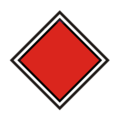 Union Army, XXV Corps, 1st Division Badge |
Corps Flags in the American Civil War
I Corps, Army of the Potomac
 |  |  |
| 1st Division | 2nd Division | 3rd Division |
II Corps, Army of the Potomac
 |  |  |
| 1st Division | 2nd Division | 3rd Division |
 |  | 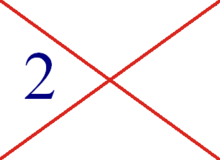 |
| Corps Hqr's | Artillery Brigade | Quartermaster |
III Corps, Army of the Potomac
 |  |  |
| 1st Division | 2nd Division | 3rd Division |
IV Corps, Army of the Potomac
 |  |  |
| 1st Division | 2nd Division | 3rd Division |
V Corps, Army of the Potomac
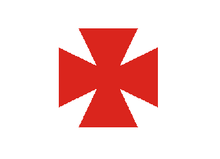 |  |  |
| 1st Division | 2nd Division | 3rd Division |
VI Corps, Army of the Potomac
 |  |  |
| 1st Division | 2nd Division | 3rd Division |
VII Corps, Dept of Arkansas
 |  |  |
| 1st Division | 2nd Division | 3rd Division |
VIII Corps, Middle Department
 |  | 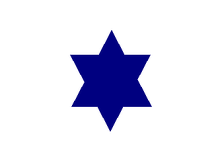 |
| 1st Division | 2nd Division | 3rd Division |
IX Corps, Army of the Potomac
 |  |  |
| 1st Division | 2nd Division | 3rd Division |
 | ||
| 4th Division |
X Corps, Department of South
 |  |  |
| 1st Division | 2nd Division | 3rd Division |
XI Corps, Army of the Potomac
 |  |  |
| 1st Division | 2nd Division | 3rd Division |
XII Corps, Army of the Potomac
 |  |  |
| 1st Division | 2nd Division | 3rd Division |
XIII Corps, Army of the Tennessee
No badge was designated for the XIII Corps.
XIV Corps, Army of the Cumberland
 |  |  |
| 1st Division | 2nd Division | 3rd Division |
XV Corps, Army of the Tennessee
 |  |  |
| 1st Division | 2nd Division | 3rd Division |
 |  | |
| 4th Division | Headquarters |
XVI Corps, Military Division of West Mississippi
 |  |  |
| 1st Division | 2nd Division | 3rd Division |
XVII Corps, Army of the Tennessee
 |  |  |
| 1st Division | 2nd Division | 3rd Division |
XVIII Corps, Army of the James
 |  |  |
| 1st Division | 2nd Division | 3rd Division |
XIX Corps, Middle Military Division
 | 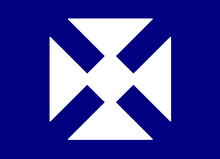 |  |
| 1st Division | 2nd Division | 3rd Division |
XX Corps, Army of the Cumberland
 |  |  |
| 1st Division | 2nd Division | 3rd Division |
{Note:XX Corps Badges same as the old XII Corps; the XX Corps was consolidated from the XI and XII Corps}
XXI Corps
 |  |  |
| 1st Division | 2nd Division | 3rd Division |
 | ||
| Headquarters |
XXII Corps, Dept of Washington
 |  |  |
| 1st Division | 2nd Division | 3rd Division |
XXIII Corps, Dept of Ohio & Dept of North Carolina
XXIV Corps, Dept of Virginia
XXV Corps, Army of the James, Dept of Texas
 |  |  |
| 1st Division | 2nd Division | 3rd Division |
Cavalry Corps in American Civil War
Brigade Badges
I Corps, Army of the Potomac
 |  |  |
 |  | 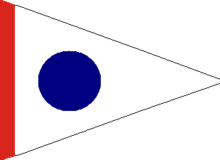 |
 |  |  |
